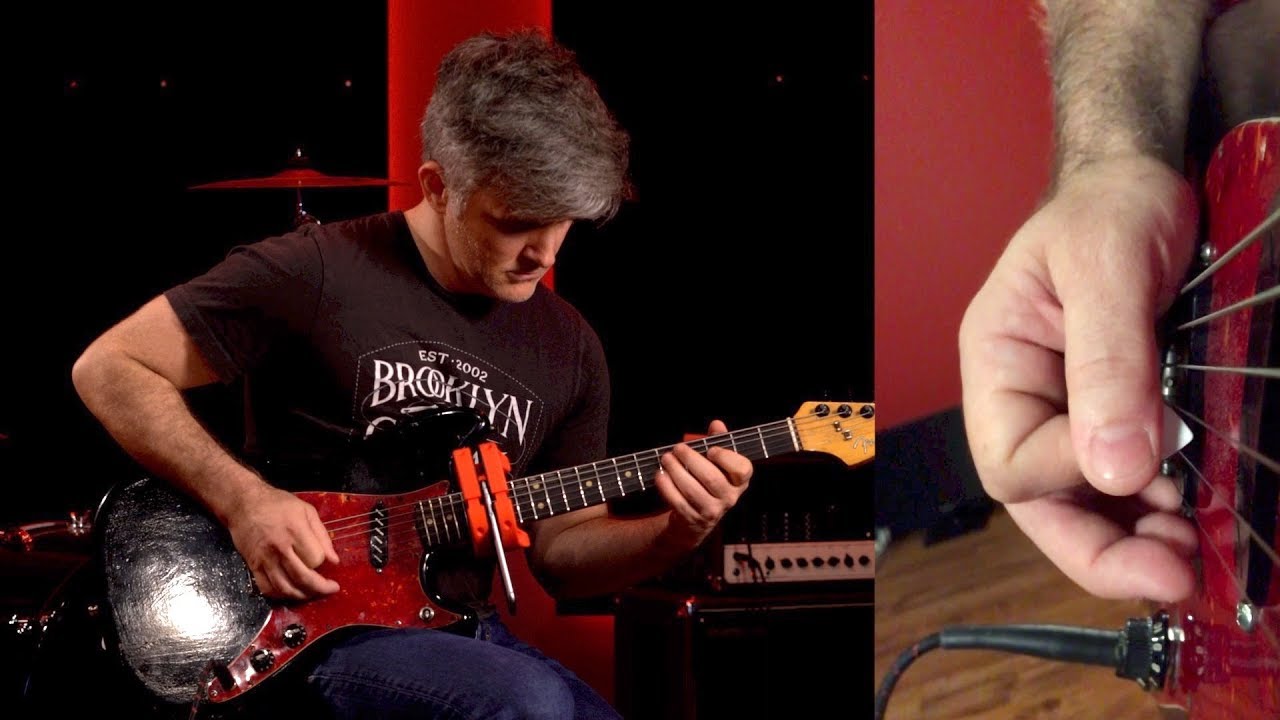What I mean to say - is 902 purely a reference for the hand setup and picks plane of movement? If it doesn’t relate to the primary motion or usx/dsx I’m curious what purpose it serves?
Yup - watched that. Other than the general ‘ulnarized’ wrist position I don’t see the relation to petrucci or Anton. The core movements also look very different to me compared to the likes of anton, andy etc.
Then you did not watch the vid very good or you just don’t understand what is going on.
Al those players use the same , what Troy calls, 902 motion to escape the strings. Which is not a complete straight side to side motion, but has a bit of a curve.
@Troy: Maybe you can explain it again to JAB?
@JAB you’re a Masters in Mechanics Member, have you seen this?
I don’t think the claim is that 902 is used in all alternate picking movements of the players mentioned. Just the DBX patterns. That’s my understanding anyway!
902 is just a shorthand I came up with to describe players who mix and match two very common wrist motions, wrist deviation and another motion that is close to deviation but slighly angled. Here’s a relevant example from today’s Instagram post:
In the slow demonstration, where I’m stepping through the fours pattern, you can see via the yellow arrows that the wrist is changing the path of its motion even though the arm position is not changing. This is how you play a phrase with wrist motion when you need to make both upstroke and downstroke string changes, i.e. you use two very similar but slightly different wrist motions, one for each escape.
The motions themselves are just wrist motions. They don’t require a guitar, and you can do them with your hand right out in front of you. If you’d like to try them out, we explain the clock face concept and walk through some of the most common wrist motions in this Primer video here:
It’s not super long and it’s pretty hands-on, you can kind of try out all these motions in the air, no guitar required.
Awesome! Thanks everyone - I was getting confused on the application and reference to players like anton etc. It now makes sense 
Here he shows some stuff with just the guitar and no amp.
Listen from about 2 minutes how super low his action is. The strings sound realy dead, almost muted with him not muting at all.
I hear that back in his amplified sound, which i do not like.
But, it is all about preference of course.
I’d agree that his action does sound low and the strings sound a bit dead/old. His attack is so consistent and forceful however, that it’s hard to say 
I’m really late on this but I just saw this video, tried it (holding the pick closer to the thumb edge).
I am a DSX player who really struggles with trying to play bluegrass where the string change is after the upstroke (obviously).
The change anton suggested has loosened my whole wrist, meaning that there is way less tension all around. It allows me to add that ulnar deviation on the downstroke, and then on the up stroke I can now do a bit of flextension in order to get me out of the strings when I need to - so I guess that is a bit of 2 way pickslanting in the old terminology. I still need to work it up but this was a great tip for me with my bluegrass playing.
If you want me to post a video I can although I’m still working this up after a couple of hours!


